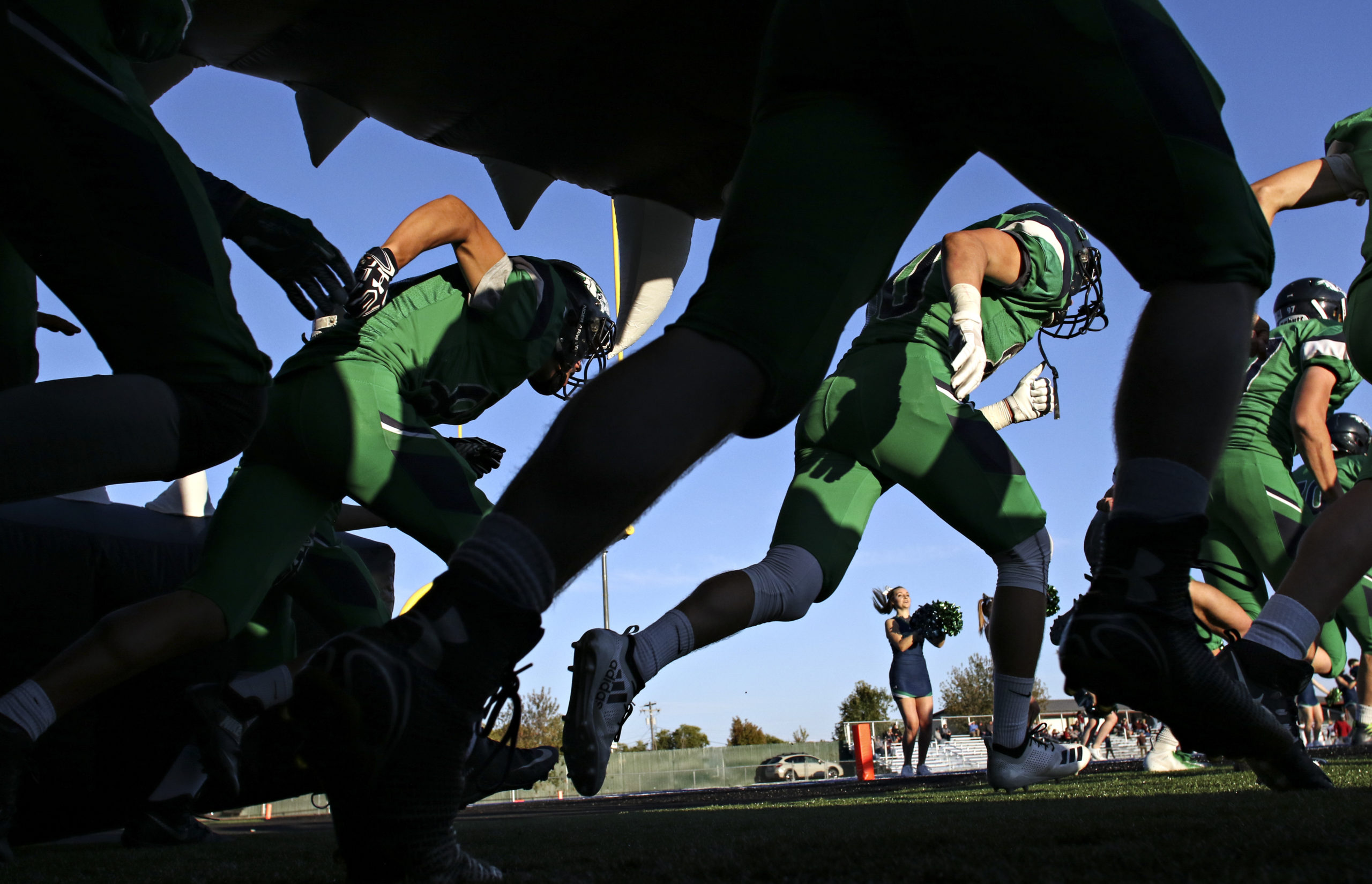At 7:30 a.m., Glacier High school is a busy place. Soccer placers zig and zag around the field doing drills, football players line up inside the track to stretch and volleyball players head from their cars to the gyms en masse.
After a hectic spring that saw the cancellation of practices and competitions due to COVID-19, high school athletics are back in full swing.
Since Montana entered Phase 2 of reopening, groups of up to 50 people are allowed to assemble, with proper physical distancing, and gyms are allowed to operate at 75% capacity. That prompted the Montana High School Association (MHSA) to release guidelines for bringing back summer activities.
Glacier High School Activities Director Mark Dennehy said the school worked with the Flathead City-County Health Department to develop a plan for athletics over the summer.
“I think there’s a heightened awareness for all of us; we want to take all the necessary precautions,” Dennehy said. “We’re moving through it slowly and carefully.”
To that end, Glacier has an extensive check-in procedure for all participants who attend a summer practice.
“[They] write down the date and time they’re at the facility, get temperatures checked, there’s a series of questions they have to answer no to, then they have to sanitize,” Dennehy said.
Athletes working out in the weight room are restricted to a specific weight rack, allowing for contact tracing. In any open gym or open field practice, coaches take full attendance and keep athletes in restricted groups.
“We’re doing the best we can to take care of our kids,” Dennehy said.
MHSA guidelines include a breakdown of sports by infection risk. For fall sports, cross country and golf are considered to have the lowest infection risk, with natural physical distancing occurring during practices and competitions.
Volleyball and soccer are classified as moderate infection risks. MHSA recommends that individuals each use their own ball, balls should be cleaned throughout practice and contact should not be allowed during point celebrations.
Football is considered to be the highest risk fall sport because of the close sustained contact between participants. For practices, groups of less than 10 are recommended, and sharing of tackling dummies, donuts and sleds should not be allowed.
“I think with any sport, all activities are going to have to be looked at and retooled to maximize safety and minimize transmission,” said Sophia Newcomer, an assistant professor of epidemiology at the University of Montana.
Newcomer said drills might need to be changed to minimize contact, and that respiratory hygiene is paramount — including not spitting during practice.
One of the biggest risks that Newcomer sees with athletics is the mentality to “push through” when athletes don’t feel 100%. Now, more than ever, she says that staying home when an athlete feels under the weather is paramount.
As it gets closer to competition season, Newcomer reiterates that CDC and local health department guidelines will have to be considered before decisions are made regarding attendance.
“It would be prudent for organizers to look at if spectators are necessary. If you can’t physically distance, then it’s not worth the risk,” she said. “Same with travel — more travel is going to be higher risk.”
Until MHSA announces anything to the contrary, Dennehy said the plan going forward is to proceed as if it’s normal, “even though we know it’s not.”
“Throughout this school year and throughout our athletic seasons, we’re going to have to make sure we can be flexible, adjust accordingly and pivot,” Dennehy said. “We’re balancing the health risks with trying to move forward with our educational goals.”
